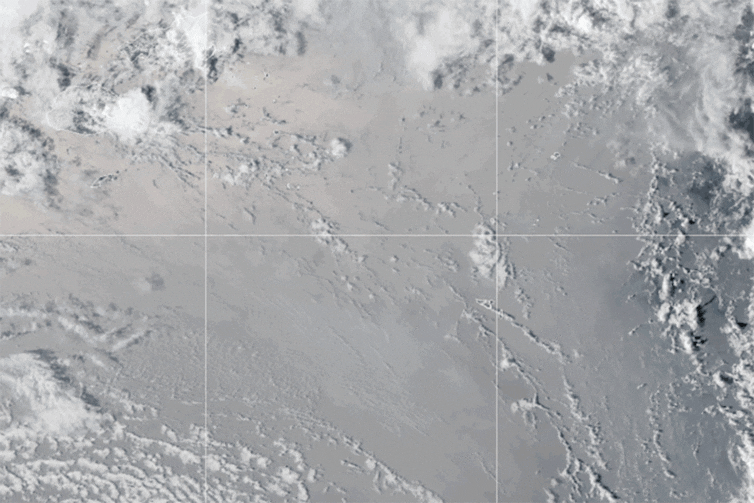4 Factors Driving Extreme Heat And Climate Disasters In 2023
4 Factors Driving Extreme Heat And Climate Disasters In 2023 Honolulu Civil Beat


The Impact of Climate Change on Extreme Weather Events
The next couple of years could be very rough.
Between the record-breaking global heat and extreme downpours, it’s hard to ignore that something unusual is going on with the weather in 2023.
People have been quick to blame climate change – and they’re right, to a point: Human-caused global warming does play the biggest role. A recent study determined that the weekslong heat wave in Texas and Mexico that started in June 2023 would have been virtually impossible without it.
However, the extremes this year are sharper than anthropogenic global warming alone would be expected to cause. Human activities that release greenhouse gas emissions into the atmosphere have been increasing temperatures gradually, at an average of 0.2 degrees Fahrenheit (0.1 Celsius) per decade.

Factors Contributing to Extreme Weather Events
El Nino
El Nino is a climate phenomenon that occurs every few years when surface water in the tropical Pacific reverses direction and heats up. That warms the atmosphere above, which influences temperatures and weather patterns around the globe.
Essentially, the atmosphere borrows heat out of the Pacific, and global temperatures increase slightly. This happened in 2016, the time of the last strong El Nino. Global temperatures increased by about 0.25 F (0.14 C) on average, making 2016 the warmest year on record. A weak El Nino also occurred in 2019-2020, contributing to 2020 becoming the world’s second-warmest year.

Based on increasing Pacific sea surface temperatures in mid-2023, climate modeling now suggests a 90% chance that Earth is headed toward its first strong El Nino since 2016.
Solar Fluctuations
The Sun may seem to shine at a constant rate, but it is a seething, churning ball of plasma whose radiating energy changes over many different time scales.
The Sun is slowly heating up and in half a billion years will boil away Earth’s oceans. On human time scales, however, the Sun’s energy output varies only slightly, about 1 part in 1,000, over a repeating 11-year cycle. The peaks of this cycle are too small for us to notice at a daily level, but they affect Earth’s climate systems.

Earth’s temperature increase during a solar maximum, compared with average solar output, is only about 0.09 F (0.05 C), roughly a third of a large El Nino. The opposite happens during a solar minimum. However, unlike the variable and unpredictable El Nino changes, the 11-year solar cycle is comparatively regular, consistent and predictable.
A Massive Volcanic Eruption
Volcanic eruptions can also significantly affect global climates. They usually do this by lowering global temperatures when erupted sulfate aerosols shield and block a portion of incoming sunlight – but not always.
In an unusual twist, the largest volcanic eruption of the 21st century so far, the 2022 eruption of Tonga’s Hunga Tonga-Hunga Ha’apai is having a warming and not cooling effect.

The eruption released an unusually small amount of cooling sulfate aerosols but an enormous amount of water vapor. The molten magma exploded underwater, vaporizing a huge volume of ocean water that erupted like a geyser high into the atmosphere.
Water vapor is a powerful greenhouse gas, and the eruption may end up warming Earth’s surface by about 0.06 F (0.035 C), according to one estimate. Unlike the cooling sulfate aerosols, which are actually tiny droplets of sulfuric acid that fall out of the atmosphere within one to two years, water vapor is a gas that can stay in the atmosphere for many years. The warming impact of the Tonga volcano is expected to last for at least five years.
Underlying It All: Global Warming
All of this comes on top of anthropogenic, or human-caused,
SDGs, Targets, and Indicators
-
SDG 13: Climate Action
This SDG is directly connected to the issues highlighted in the article, which discuss the impact of climate change on extreme weather events and rising global temperatures.
-
SDG 11: Sustainable Cities and Communities
This SDG is indirectly connected to the issues discussed in the article, as extreme weather events can have a significant impact on cities and communities, including heatwaves, flooding, and other climate-related disasters.
Specific Targets and Indicators
-
Target 13.1: Strengthen resilience and adaptive capacity to climate-related hazards and natural disasters
This target is relevant to the issues discussed in the article, as it emphasizes the need to build resilience and adapt to climate-related hazards. The article mentions the increase in extreme weather events and the potential for more heatwaves, forest fires, and flash floods.
Indicator: Number of deaths, missing persons, and directly affected people attributed to climate-related hazards and disasters
The article mentions the impact of extreme weather events on human populations, such as heatwaves and flooding, which can result in deaths, missing persons, and directly affected people.
-
Target 13.2: Integrate climate change measures into national policies, strategies, and planning
This target is indirectly connected to the issues discussed in the article, as it emphasizes the need for countries to incorporate climate change measures into their policies and planning. The article mentions the importance of climate modeling and forecasting to understand the impact of climate change on extreme weather events.
Indicator: Number of countries that have integrated mitigation, adaptation, impact reduction, and early warning measures into national policies, strategies, and planning
The article mentions the use of climate modeling and forecasting to understand the impact of climate change on extreme weather events, which indicates that countries are incorporating mitigation, adaptation, and early warning measures into their policies and planning.
Table: SDGs, Targets, and Indicators
| SDGs | Targets | Indicators |
|---|---|---|
| SDG 13: Climate Action | Target 13.1: Strengthen resilience and adaptive capacity to climate-related hazards and natural disasters | Number of deaths, missing persons, and directly affected people attributed to climate-related hazards and disasters |
| SDG 13: Climate Action | Target 13.2: Integrate climate change measures into national policies, strategies, and planning | Number of countries that have integrated mitigation, adaptation, impact reduction, and early warning measures into national policies, strategies, and planning |
Behold! This splendid article springs forth from the wellspring of knowledge, shaped by a wondrous proprietary AI technology that delved into a vast ocean of data, illuminating the path towards the Sustainable Development Goals. Remember that all rights are reserved by SDG Investors LLC, empowering us to champion progress together.
Source: civilbeat.org

Join us, as fellow seekers of change, on a transformative journey at https://sdgtalks.ai/welcome, where you can become a member and actively contribute to shaping a brighter future.







